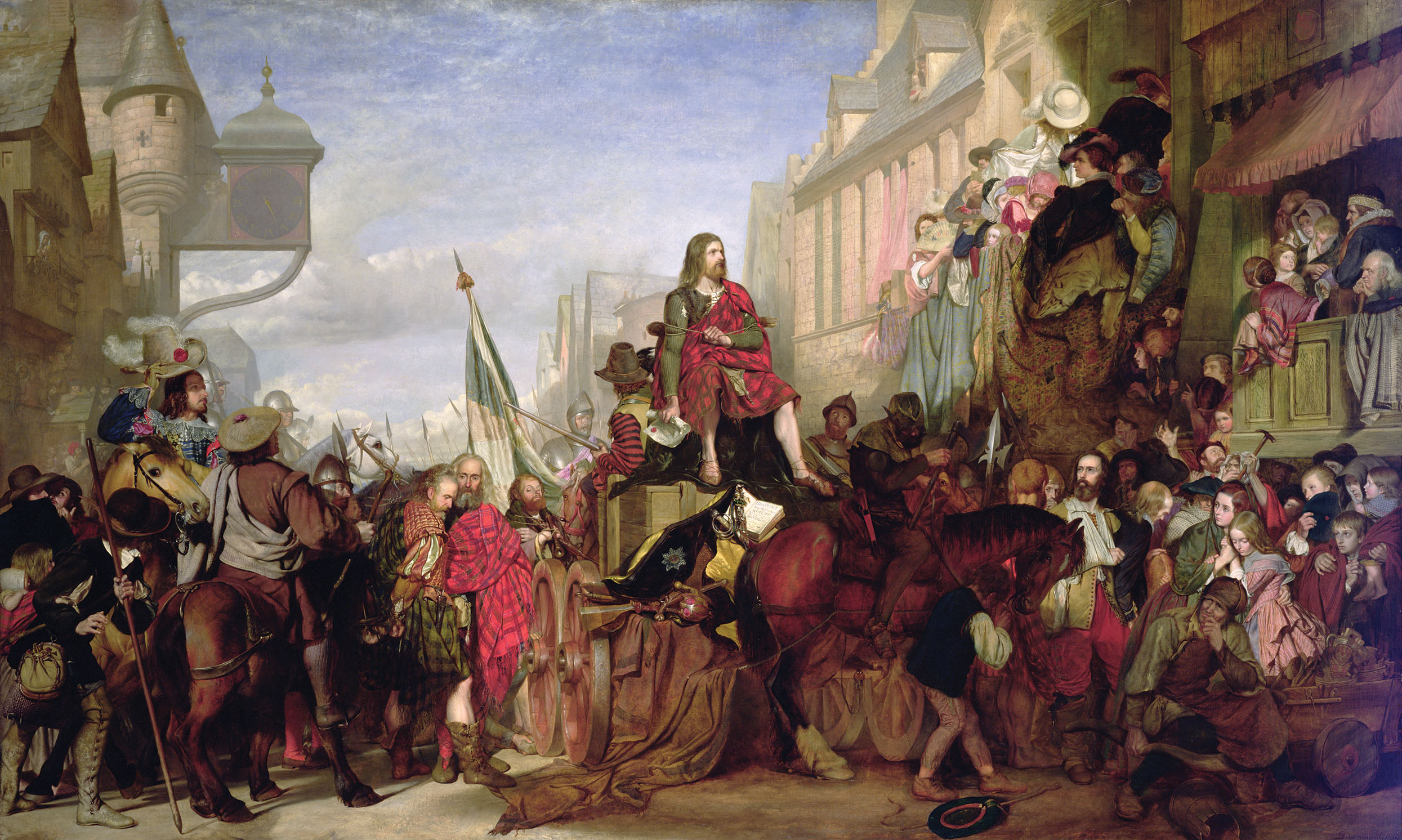Amid the ever-shifting political alliances of 17th century Scotland, fighting marquess James Graham morphed from Covenanter champion into defender of the Crown
James Graham arrived a prisoner at the Canongate district on the outskirts of Edinburgh on May 18, 1650, and was promptly bound to the seat of a rude little horse-drawn cart for transport to the Tollbooth prison. Though the route through Canongate to the prison was less than a mile, the humiliating procession took three hours.
Yet there was an absence of the shouting or ridicule usually aimed at the condemned. Instead, Scots lining the streets wept, many exclaiming admiration and blessings for the doomed man. On May 20 the Scottish Parliament formally handed down its sentence. Although a nobleman, Graham was sentenced to hang like a common criminal. On his walk to the gallows at Grassmarket the next morning he appeared unmoved, or at very least determined not to give satisfaction to his enemies—especially Archibald Campbell, Marquess of Argyll, the most powerful man in Scotland and Graham’s principal foe.
On reaching the gallows, Graham maintained a dignified calm. Standing before the crowd, he delivered a farewell speech. “I have no more to say but that I desire your charity and prayers,” he concluded. “And I shall pray for you all. I leave my soul to God, my service to my prince, my goodwill to my friends, my love and charity to you all.”
Closing his eyes, Graham lifted his hands in prayer. Then, with arms bound, he ascended the steps to the gallows, where a weeping hangman fitted the noose around his neck. Moments later Graham dropped through the trapdoor to his death. Authorities had his severed head placed on a pike atop the Tollbooth and his limbs sent to Aberdeen, Glasgow, Perth and Sterling. As he had died excommunicated, his torso was unceremoniously tossed into a crude wooden box and buried in unconsecrated ground. His skull remained atop the Tollbooth for 11 years.
Born in 1612, James Graham, Marquess of Montrose, is a complicated figure in Scottish history. Clan rivalry played a significant role in how contemporaries regarded him. While Argyll’s allies despised him, scores of Scots clearly adored him. After all, Graham was charismatic, dashing and chivalrous, and he proved an adept commander who inspired loyalty among his men.
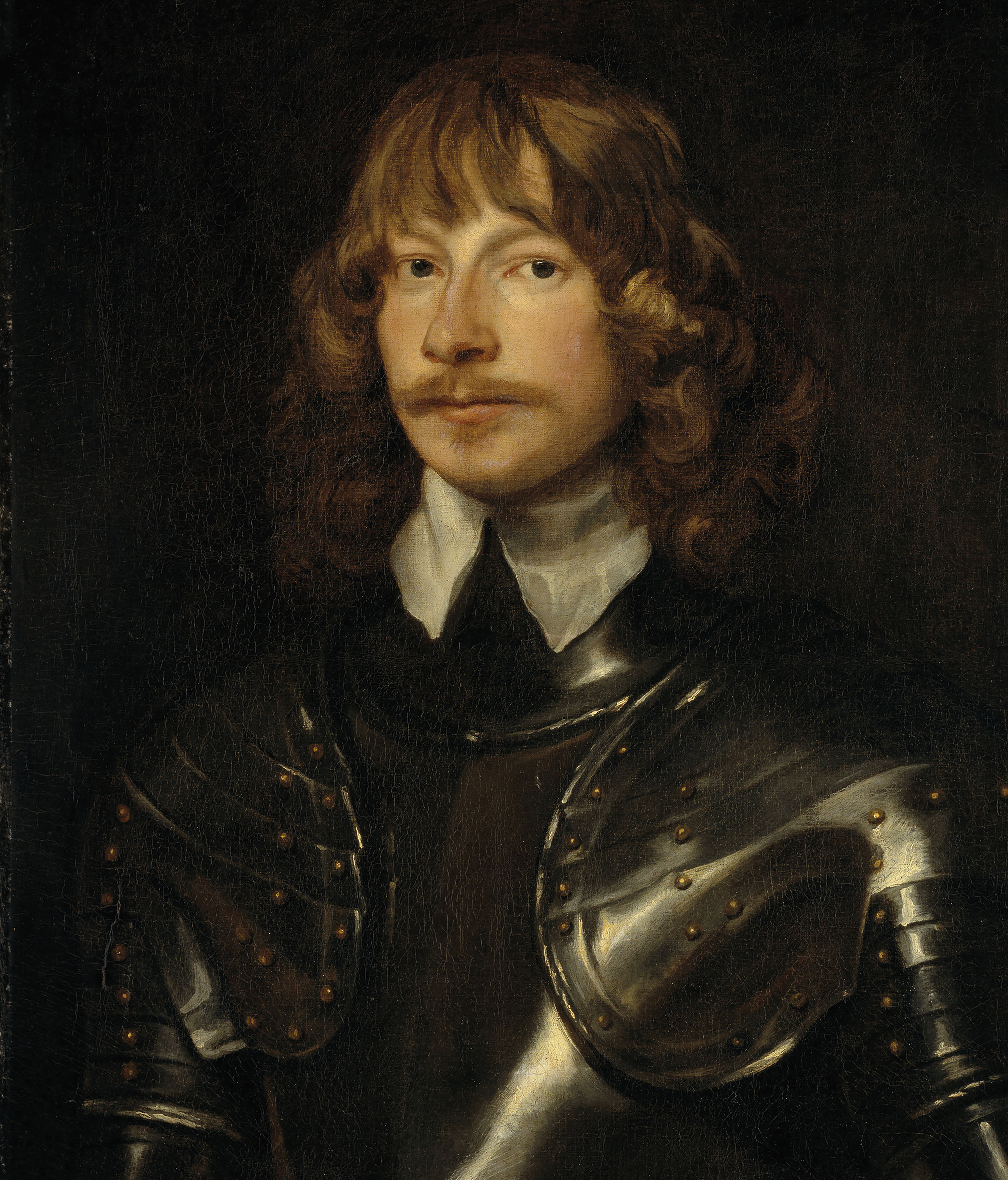
In 1637 Charles I, king of England, Ireland and Scotland, sought to compel usage of a virtual copy of the Anglican Book of Common Prayer throughout Presbyterian Scotland. Though the Scots believed Charles ruled by divine mandate, they resented his encroachment into their faith and responded with widespread riots. The unrest culminated in February 1638 with the creation of the National Covenant, an agreement that bound its signatories to the defense of the Presbyterian Church of Scotland and rejection of any further “reforms.” Soon thereafter tens of thousands of “Covenanters” mustered to defend Scotland against an anticipated English invasion. Tensions arising from the ensuing Bishops’ Wars (1639–40) in turn prompted the 1642–46 English Civil War. The latter conflict forced the Scots to consider whether Charles (who was at least of Scottish descent) or the English Parliament should dominate the other. Graham, an early signer and promoter of the Covenant, was among many conflicted Scotsmen essentially forced to choose between loyalty to his king or to the Presbyterian faith.
As the conflict with Charles dragged on, more moderate Covenanter leaders were supplanted by committed anti-Royalists led by Argyll, who became the de facto ruler of Scotland. The Grahams and Campbells were longtime adversaries. Bristling at the very thought of bowing to Argyll’s authority, the popular Graham led the opposition to his rule. A period of political infighting and violent intimidation ensued, ending when Graham fled Scotland for the safety of Charles’ court in Oxford. For months he tried in vain to convince the king that Argyll’s Covenanters and English Parliamentarians had formed an alliance. Then, in 1644, on learning of the Solemn League and Covenant between Scotland and the rebellious Parliament, Charles awarded Graham his marquessate, appointed him lord lieutenant of Scotland and commissioned him a captain general. His metamorphosis from Graham the Covenanter champion to Montrose, loyal defender of the Crown, was complete.
Although commissioned by Charles to re-establish Royalist control in Scotland, Montrose was not given an army or funds with which to accomplish his task. But as the Campbell clan had many enemies in Scotland, Montrose believed he could raise an army of rival clansmen bent on revenge for long-standing feuds. He received a promise of 2,000 Irish from Randal MacDonnell, Lord Antrim—who was eager to take the fight to the despised Campbells—though Montrose remained dubious such a force would materialize.
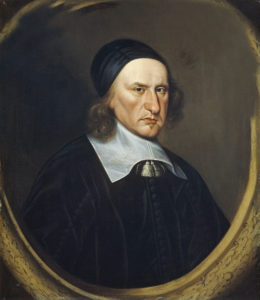
Meanwhile, that spring the marquess managed to cobble together some 2,000 English troops, cross the border into Scotland and seize the town of Dumfries. However, with the approach of a far larger Covenanter army, and his Englishmen on the verge of mutiny, Montrose was compelled to retreat to Carlisle. Soon laying claim to the dregs of his army was Prince Rupert of the Rhine, then seeking to reconstitute his own Royalist army after a crushing defeat by a combined Parliamentarian and Covenanter army at the July 2 Battle of Marston Moor in Yorkshire.
Loath to watch from the sidelines, Montrose snuck back into Scotland in disguise with two companions, intending to recruit as many of his countrymen as possible to the royal standard. Though he didn’t know it, his fortunes were about to change, as the MacDonnells had landed in Scotland as promised and at that very moment were looking for him.
Montrose caught up to them and a body of local clansmen at Blair Atholl. Towering above the motley crew was Alasdair MacColla, legendary head of the Irish MacDonnells. Most of MacColla’s men were professional soldiers with experience fighting alongside the Spanish in Flanders. They would prove the toughest soldiers in Montrose’s little army.
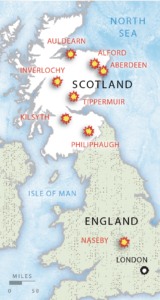
The compact force numbered barely 2,100 men, and while the MacDonnells were veterans, most other clansmen were inexperienced and armed only with dirks and swords. Regardless, Montrose knew he had to act quickly before the Highlanders lost interest and returned home, as they were wont to do. He resolved to attack Perth, a few miles south of Blair Atholl. On September 1 his army drew up outside Tippermuir, just west of Perth, and battled the defending garrison of some 2,500 men, mostly untried levies. After an exchange of musket fire, the veteran MacDonnells charged screaming through the smoke and routed the Covenanters in a matter of minutes. The Highlanders promptly plundered Perth.
Flush with his first victory, Montrose marched north toward Aberdeen, defended by two regiments of regular soldiers. Combining with local militia, the Covenanters mustered 3,000 troops against Montrose’s army, which had dropped to some 1,500 men, as scores of Highlanders had deserted as expected. Montrose found the Covenanter army arrayed along the crest of ridge on the city outskirts. After fending off a few half-hearted attacks, MacColla and his MacDonnells employed their tried-and-true method of firing a volley and then charging with drawn swords. Smashing the Covenanter line, they slaughtered hundreds of their retreating foes.
Despite back-to-back routs and the loss of two of Scotland’s largest cities, the Covenanters still had significant manpower on which to draw. Even as Montrose’s victorious men sacked Aberdeen, Argyll drew within two days march at the head of a 4,900-strong army of experienced troops. Montrose withdrew his army northwest into the Highlands, certain his men could easily outmaneuver any number of Lowlanders led by Argyll.
Through the forest of Rothiemurchus and over the rocky uplands of Badenoch the Covenanters pursued the Royalists. But Montrose’s men traveled light, keeping a day or two ahead of their pursuers. After little more than a month the Royalists had ventured a few hundred miles into the Highlands, confident Argyll would break off his chase at the outset of winter.
When Argyll and the Covenanters did settle into winter quarters, Montrose planned a campaign into the very heart of Campbell territory. Encouraged by the MacDonnells’ hatred of the latter, the Royalist army marched into the Campbells’ inhospitable corner of the Highlands, intent on ravaging the region.
Caught by surprise that December, the Campbells tasted defeat at Loch Awe and again at Inverary. Of the campaign one of the MacDonnells recalled they “left neither house nor hold unburned, nor corn nor cattle that belonged to the whole name of Campbell.” In response the Covenanters dispatched General William Baillie from Edinburgh with a small army, while Argyll recalled regiments from Ireland. Pursued by two armies, Montrose fled north into the Lochaber wilderness.
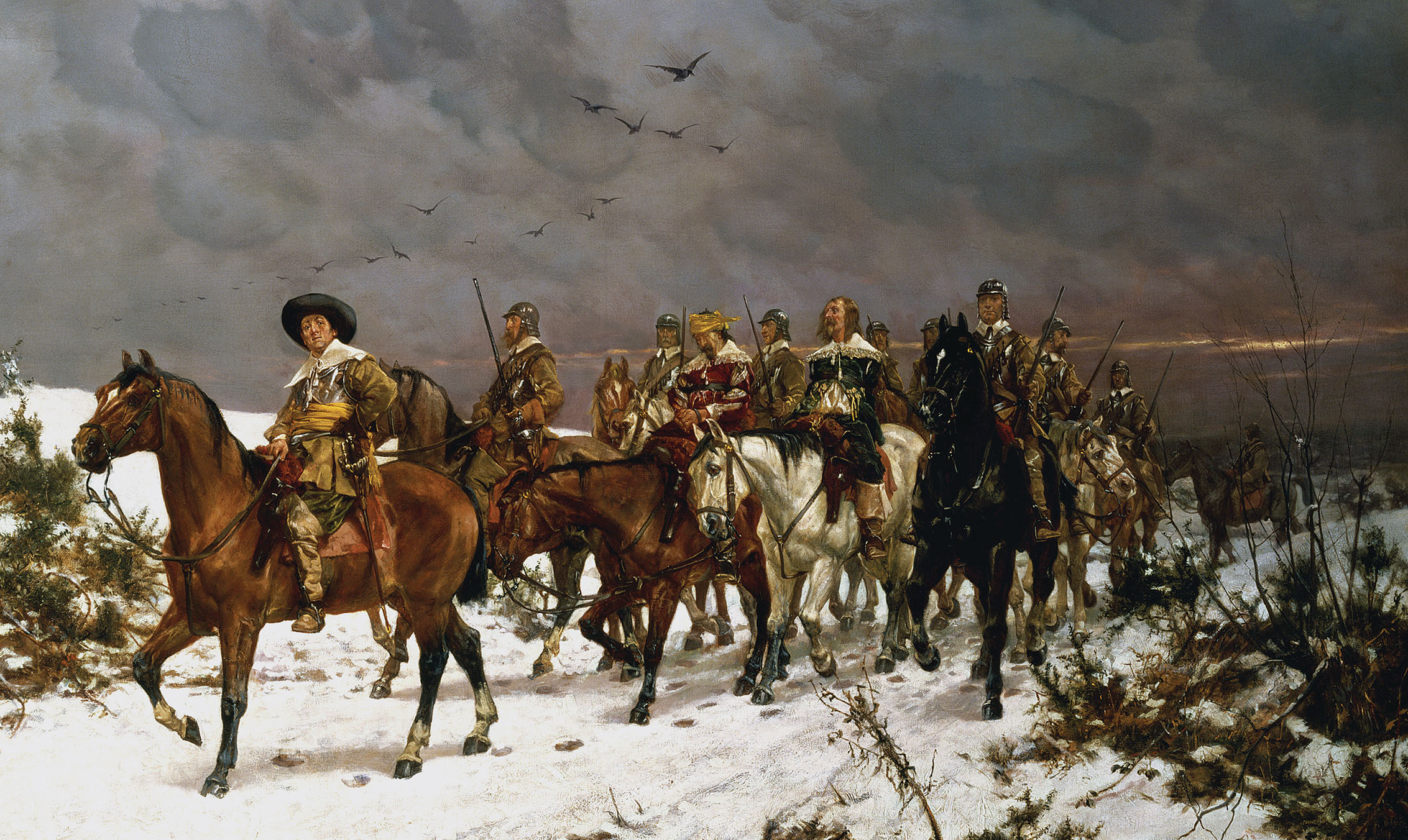
As it was the middle of winter, and the Royalists had retreated into a desolate area devoid of provisions, Argyll reasoned Montrose would be forced to emerge through either of two mountain passes, both of which his Covenanters held. But with the help of local shepherds Montrose led his little army over a third snow-covered pass unknown to Argyll.
On February 1, the second day of his march over the mountains, Montrose approached Inverlochy and the camp of Argyll’s army. That night he arrayed his Royalists on a steep slope overlooking the slumbering Covenanters. At dawn on the 2nd the entire Royalist force, with MacColla conspicuously out front, charged downhill at the Campbells. Horrified at the magnitude and ferocity of the assault, the Covenanters broke and ran. Argyll, who earlier that morning had retired offshore to his waiting galley, promptly sailed off, leaving his men to their fate. Grim it was. The MacDonnells took particular delight in cutting down the fleeing Campbells, slaying some 1,500 men amid the rout. Inverlochy was a smashing victory for Montrose, while for generations of Campbells to come Feb. 2, 1645, remained a dark date in clan history.
Unable to defeat Montrose on the battlefield, the exasperated Covenanter government in Edinburgh branded him a traitor and had him excommunicated. Regardless, his victories brought large numbers of Scots to the Royalist banner, swelling the size of his army. Running short of supplies in the Grampian Mountains that April, Montrose set out with a raiding party for Dundee and took the surprised town easily. Leaving proved trickier, as a Covenanter army under Baillie suddenly appeared, forcing the raiders to flee. An all-night pursuit ensued, as Baillie resolved this time to capture Montrose and his little band. Again the marquess evaded capture.
A small force of Covenanters did manage to force battle at Auldearn on May 9, charging into the Royalists at dawn over mist-shrouded ground. The fight raged for hours, until Montrose and his cavalry charged into the enemy’s right flank.
Taken by surprise, the Covenanters buckled and fled, leaving a third of their number dead on the field. At Alford on July 2 Montrose caught Baillie’s army on low boggy ground with its back against the River Don. Fielding around 600 horse, the Covenanters had a decided cavalry advantage over the Royalists’ 300 mounted men. But Montrose’s Highlanders had developed a brutally efficient means of dispatching cavalry by hamstringing enemy horses with their swords and dirks. Employed at Alford, the tactic effectively neutralized Covenanter cavalry charges on both flanks. With the defeat of his horsemen, Baillie lost his nerve and ordered a retreat.
The time had come for Montrose to invade the Lowlands. Swelled with significant reinforcements from new and longtime allies, he passed to the northwest of Stirling to avoid its strong garrison and crossed the Forth of Firth at an unguarded ford. A 4,500-man army under the joint command of Baillie and Argyll rushed to confront him. Crossing the rolling ground of the Campsie Fells under a hot summer sun, the Covenanter force met Montrose and his 3,500-strong army on a high meadow above the town of Kilsyth on August 15.
Montrose had taken up a strong defensible position behind the low stone walls of a farm with a deep hollow between him and the Covenanters. The ever-cautious Baillie had no desire to attack, but Argyll was of a different mindset. He not only overruled his general but sent the latter’s soldiers on a long flanking march in full view of Montrose.
Uncontrollable as ever, MacColla and his MacDonnells, though greatly outnumbered, charged pell-mell into the flank-marching Covenanters. For once, however, Montrose had a stout force of cavalry, which he sent against the flanking Covenanters from the north. The force of their impact routed the enemy cavalry, driving them back into their own infantry. At that moment Montrose ordered a general attack.
Confused and disordered, the Covenanters—with Argyll in the lead—panicked and fled at the sight of the rampaging Highlanders. The resulting victory spelled an end to Covenanter resistance in Scotland. Argyll and posse slipped east across the border to Berwick, while others sailed back to Ireland. Seeing the handwriting, the Covenanter strongholds Unfortunately for Montrose, his reclamation of Scotland was all too short-lived. In early September news reached him that Lt. Gen. David Leslie was marching north from the main Covenanter army in England with some 6,000 men.
Despite his victories, Montrose had difficulty raising sufficient troops, as the Highlanders had again abandoned the army for home or to resume interclan warfare. Going into camp at Philiphaugh, southwest of Selkirk, the Royalist force numbered scarcely 1,600 men. Worse yet, Leslie was coming on much faster than Montrose had anticipated.
On the morning of September 13 Montrose and his men awoke to find themselves nearly surrounded by Leslie’s troops, most of them mounted. After initially resolving to stand and fight, Montrose thought it best to break out with what troops he could salvage. He managed to get away with a few hundred cavalrymen and most of his officers, leaving his infantrymen no choice but to surrender. Despite a promise of quarter, few of the captured officers and men escaped execution. The vengeful Covenanters also killed dozens of camp followers in cold blood.
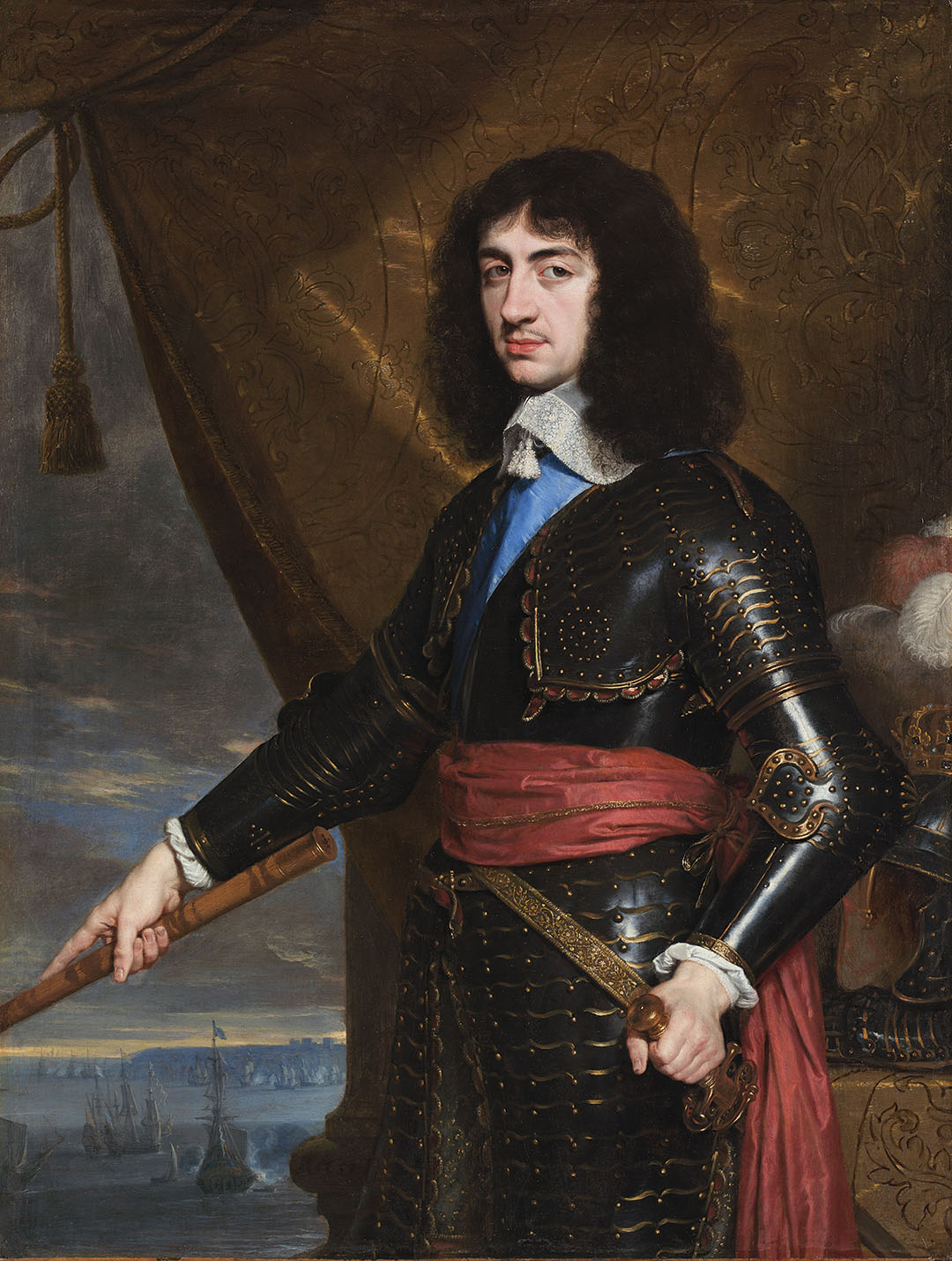
The disaster at Philiphaugh was not the end for Montrose. He rebuilt an army of willing recruits from the Highlands and by March 1646 had raised 5,000 men. Among other setbacks over the ensuing months, Covenanters destroyed Montrose’s home, Kincardine Castle. Yet he held out hope he could reverse his fortunes in the coming campaign season. Charles himself dashed any such hope. Following his rout at Naseby the prior summer the sovereign had suffered a string of defeats, and that May he fled the Parliamentarian siege of Oxford disguised as a servant. Charles ultimately turned himself over to the mercy of Scottish Protestants, who after a year of negotiation with Parliamentarians, surrendered the neutered king to the English—for a price. Meanwhile, all effective Royalist support in Scotland vanished.
Montrose sought exile in Germany. By then his military exploits had been published in Latin, making him something of a celebrity in aristocratic Europe. He was held in such regard that both France and the Holy Roman empire appointed him a general officer. Still, he remained committed to Charles’ restoration. To that end he kept in contact with Royalist holdouts in Scotland, though he lacked funds to raise an army. With few options, he remained in exile through the 1648 Second English Civil War.
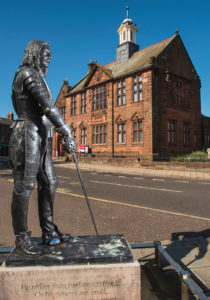
After Parliamentarians had Charles I executed in 1649, his teenage son assumed the Scottish throne as Charles II, albeit from exile in the Netherlands. Montrose swore allegiance to Charles and was rewarded with title as lieutenant governor and captain general of Scotland. The Parliament in Edinburgh denied the young king permission to return from exile unless he pledged to impose Presbyterianism throughout his Britain and Ireland.
Seeking to force more amenable terms, Charles sent Montrose to Scotland, hoping for a repeat of the latter’s stellar 1644 campaign. However, the Stuarts were to remain unworthy of Montrose’s fealty. Even as the loyal marquess sailed for Scotland, Charles compromised with the Covenanters to secure his birthright. Soon after landing in April 1650, Montrose learned the king had revoked his military commission, and the Scottish government had placed a bounty on his head.
Fielding scarcely 1,500 foot soldiers—mostly green troops from Orkney—and again short on cavalry, Montrose was surprised by a superior Covenanter cavalry force at Carbisdale on April 27. While the MacDonnells may have been able to stop the charging warhorses cold, the Orcadians had never encountered cavalry and fled in a terror. Montrose sought refuge at nearby Ardvreck Castle, only to be betrayed to the Covenanters by a mercenary chieftain of the MacLeods.
Within weeks Montrose was taken to Edinburgh to hang. But no one could erase his martial legacy. Eager to prove his mettle in battle for his king, he had led a remarkably short and brilliant campaign of maneuver, and, albeit briefly, wrested Scotland from the Covenanters. In doing so, he’d also managed to tie down thousands of troops that might otherwise have been employed fighting Charles I in England. Though the manner of his death was ignoble, Montrose faced his execution in sublimely noble fashion.
His redemption was posthumous. In 1661, following the restoration of the Stuart monarchy in England, Scotland and Ireland, Charles II had Montrose’s torso exhumed and placed in a proper coffin with his severed head and limbs. The remorseful king then had the marquess ceremonially entombed at great expense in Edinburgh’s St. Giles’ Cathedral. Montrose remains a sympathetic romantic figure in Scottish history and lore. MH
Matthew Beazley is a Georgia-based archaeologist and lifelong student of military history. For further reading he recommends Montrose, by C.V. Wedgewood, and Crown, Covenant and Cromwell: The Civil Wars in Scotland, 1639–1651, by Stuart Reid.
This article appeared in the March 2021 issue of Military History magazine. For more stories, subscribe here and visit us on Facebook:

